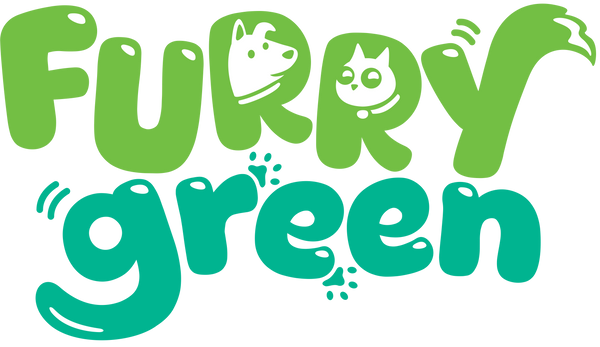
🌟 The Ultimate Guide to Maltese Dogs: Small but Mighty Companions for City Living
Share
The Ultimate Guide to Maltese Dogs in the City
Picture this: you’re sipping morning coffee in your high-rise when a tiny puff of white fur bounces across the room, eyes sparkling with joy. That’s life with a Maltese — a dog that turns even the smallest apartment into a home filled with laughter, love, and a touch of glamour.
Key Takeaways TLDR
- Perfect city dogs: Small (3–4 kg), adaptable, affectionate, and thrive in apartments.
- High-maintenance coat: Daily brushing plus grooming every 4–6 weeks; professional help often needed.
- Prone to certain health problems: Dental disease, luxating patellas, hypoglycemia (in puppies), tracheal collapse, liver shunts, and eye disorders.
- Training and socialization are essential: Helps prevent barking, separation anxiety, and fear-based behaviors.
- Long lifespan: With good care, Maltese live 12–15+ years.
🏛 Ancient Aristocrats: From Malta to Modern Asia
The Maltese boasts 2,800+ years of companionship history. Roman nobles, European queens, and Hollywood stars chose these dogs for one purpose: pure devotion.
This legacy explains why Maltese excel as apartment companions — they're bred to bond, not work.
🐾 Personality & Temperament: The Velcro Dog Life

Core Traits:
- Affectionate: Constant companionship seekers
- Confident: Bold personality in a 7-pound package
- Intelligent: Quick learners with stubborn streaks
- Watchful: Excellent alert dogs (translation: vocal)
👉 Pro Tip: A bored Maltese = a barking Maltese. Keep their minds busy with training games and puzzles.
🐶 Maltese Care Across Life Stages
| Puppy Stage (0–12 months) | Adult Stage (1–7 years) | Senior Stage (8+ years) |
|---|---|---|
| Feeding: 3–4 small meals/day to prevent hypoglycemia. | Exercise: 20–30 minutes daily + enrichment games. | Vet care: Twice-yearly exams with bloodwork to catch early disease. |
| Training: Start house training, crate training, and socialization early. | Diet: 2 meals/day with balanced protein; watch body condition. | Exercise: Shorter, gentler walks; joint supplements if advised. |
| Health: Puppy vaccines, deworming, and first dental checks. | Preventive care: Annual wellness exams, dental cleanings. | Diet: Adjust calories for lower metabolism; dental-friendly foods. |
| Grooming: Get pups used to brushing and gentle handling. | Mental health: Keep engaged with training games to curb barking. | Monitoring: Watch for heart murmurs, arthritis, or cognitive changes. |
🩺 Health & Wellness in the City
Common Issues
Maltese are generally healthy but, like all toy breeds, have some hereditary and lifestyle-linked conditions:
- Dental disease: Crowded teeth → tartar, gum disease, and tooth loss. Daily brushing is critical.
- Luxating patella: “Slipping kneecaps” causing limping or skipping. Keep your dog lean and avoid excessive jumping.
- Hypoglycemia in puppies: Toy-breed puppies can develop dangerously low blood sugar. Frequent meals are essential in the first months.
- Tracheal collapse: A collapsing windpipe can cause a honking cough. Use a harness instead of a collar.
- Congenital liver shunt (PSS): Some Maltese are born with abnormal blood vessels bypassing the liver. Signs include poor growth, vomiting, or seizures.
- White Dog Shaker Syndrome: A neurologic tremor disorder seen in some Maltese.
- Eye diseases: Progressive retinal atrophy (PRA), cataracts, and tear staining are common.
👉 Vet tip: Schedule annual exams (every 6 months for seniors) with dental cleanings, weight checks, and bloodwork to catch early disease.
🍽 Feeding the Urban Maltese

Maltese need a carefully managed diet due to their size and predisposition to dental and metabolic issues.
- Calorie needs: ~35–45 kcal per pound (70–100 kcal/kg) daily, but this varies by age, activity, and metabolism.
- Protein: At least 18–25% high-quality protein (AAFCO-compliant).
- Dental diets: Special kibble or veterinary dental diets can help slow tartar buildup.
- Picky eaters: Stick to consistent meals; avoid frequent diet changes.
-
Furry Green's gently cooked recipes are a perfect choice, offering balanced nutrition that even picky eaters love.
Explore Our Dog Food
✂️ Grooming & Coat Care
The Maltese coat is stunning but requires discipline:
- Daily brushing: Prevents mats and tangles.
- Professional grooming: Every 4–6 weeks. Many owners choose a shorter “puppy cut.”
- Tear stain management: Use vet-approved wipes; rule out underlying eye or dental disease.
- Shaving caution: Maltese do not have a double coat, but shaving can still cause sunburn or skin irritation. Only shave under veterinary or professional grooming advice.
🎓 Training & Behavior
Maltese are intelligent and affectionate but can be vocal and clingy (“Velcro dogs”).
- House training: Can be tricky in high-rise apartments. Puppy pads or indoor setups may help.
- Barking: Early training with a “quiet” command, puzzle toys, and desensitization helps.
- Separation anxiety: Common if left alone too often. Gradual alone-time training is essential.
- Socialization: Expose early to elevators, busy streets, and other dogs to reduce fear-based behaviors.
🐕 Exercise & Enrichment
Maltese don’t need long hikes, but they do need daily activity:
- 20–30 minutes of walking daily.
- Indoor play: Puzzle toys, short training sessions, hallway fetch.
- Mental stimulation: Food puzzles, trick training, and new experiences to prevent boredom.
🌆 The Urban Maltese Lifestyle

Maltese adapt beautifully to city living when their needs are met.
- Compact size = easy to travel and live in apartments.
- Noise sensitivity: City sounds can be overwhelming; training and desensitization help.
- Heat safety: Avoid midday walks in hot/humid climates; test pavement with your palm.
- Air quality: Poor urban air can worsen coughing in dogs with tracheal issues — consider an indoor air purifier. (see the article on Hong Kong's air pollution for pets: here)
- Housing regulations: Always check lease agreements and local rules before adopting.
- Housing Rules & Regulations
- Private housing: Pet ownership depends on the Deed of Mutual Covenant (DMC) and landlord approval. Even where pets are allowed, noise or hygiene issues may lead to action by building management.
- Public rental housing: Generally restricts new dogs, with limited exceptions (e.g., service animals).
- Tip: Always confirm building rules and lease terms in writing before adopting.
- With consistent care, grooming, and training, your Maltese will thrive in Asia’s bustling cities and reward you with 12–15 years of loyal companionship.
✅ Veterinary Checklist for Maltese Owners
- 🪥 Brush teeth daily + professional dental cleaning annually.
- 🐾 Keep your dog lean to prevent joint and respiratory issues.
- 🧬 Ask your vet about screening for liver shunts and PRA.
- 🎓 Train early to manage barking and prevent separation anxiety.
- ✂️ Groom consistently — daily brushing + professional trims.
- 🩺 Schedule annual (or semi-annual for seniors) checkups.
Final Thoughts
The Maltese is an affectionate, glamorous, and adaptable breed — a wonderful choice for urban families prepared to meet their grooming, health, and behavioral needs. With consistent preventive care, Maltese often live 12–15+ happy, healthy years, rewarding owners with unwavering companionship.
Frequently Asked Questions
Are Maltese good for first-time owners in apartments?
Yes, Maltese are excellent for first-time owners in apartments. Their small size, moderate exercise needs, and affectionate nature make them ideal companions for city living. However, they require consistent daily grooming and early training to manage potential barking.
How much grooming does a Maltese really need?
A Maltese requires significant grooming. Daily brushing is essential to prevent their fine hair from tangling and matting. Additionally, they need professional grooming every 4 to 6 weeks. Many owners opt for a shorter 'puppy cut' to make maintenance easier.
Do Maltese bark a lot?
Maltese can be prone to barking as they are naturally alert and watchful. It's important to start training early with a 'quiet' command and provide plenty of mental stimulation with toys and games to prevent boredom-related barking, which is especially important for apartment harmony.
📚 References
- GovHK. (2024). *Bringing Pets to Hong Kong*. Available at: https://www.gov.hk/en/nonresidents/living/pets.htm (Accessed: October 2024).
- GovHK. (2024). *Taking Care of a Pet*. Available at: https://www.gov.hk/en/residents/housing/maintenance/tips/takecarepet.htm (Accessed: October 2024).
- Family CLIC. (2024). *What kinds of pets can be kept?*. Available at: https://familyclic.hk/en/topics/daily-lives-legal-issues/laws-relating-to-pets/what-kinds-of-pets-can-be-kept/ (Accessed: October 2024).
- Hong Kong Housing Society. *Guidance on keeping pets*. The specific document was unavailable at the time of access; information can be found on their main website. Available at: https://www.hkhs.com/en/index (Accessed: October 2024).
- South China Morning Post. (2016). *Pet owners in Hong Kong’s residential buildings need to be considerate of neighbours*. Published Dec 2016. Available at: https://www.scmp.com/special-reports/property/topics/weekend-property/article/2052561/pet-owners-hong-kongs-residential (Accessed: October 2024).
- Agriculture, Fisheries and Conservation Department (AFCD). (2024). *Proper control of dogs in public places*. Available at: https://www.pets.gov.hk/english/proper_care_of_pets/dogs/proper_control.html (Accessed: October 2024).
